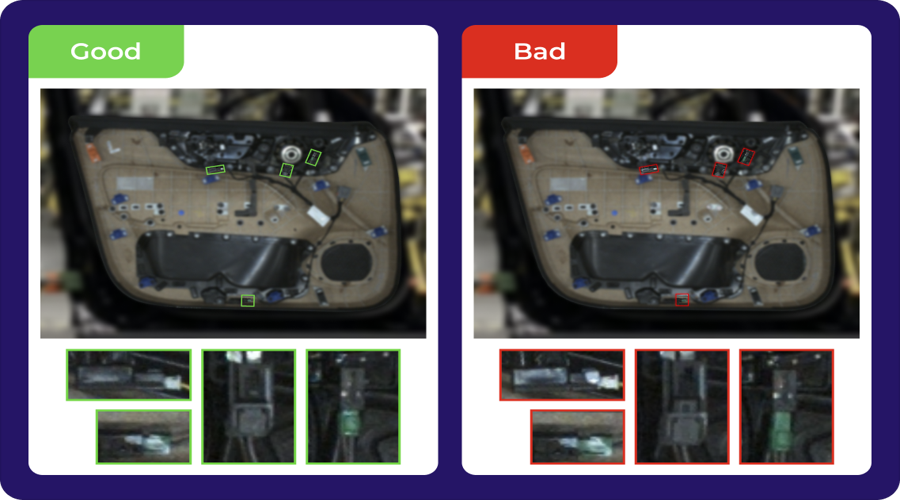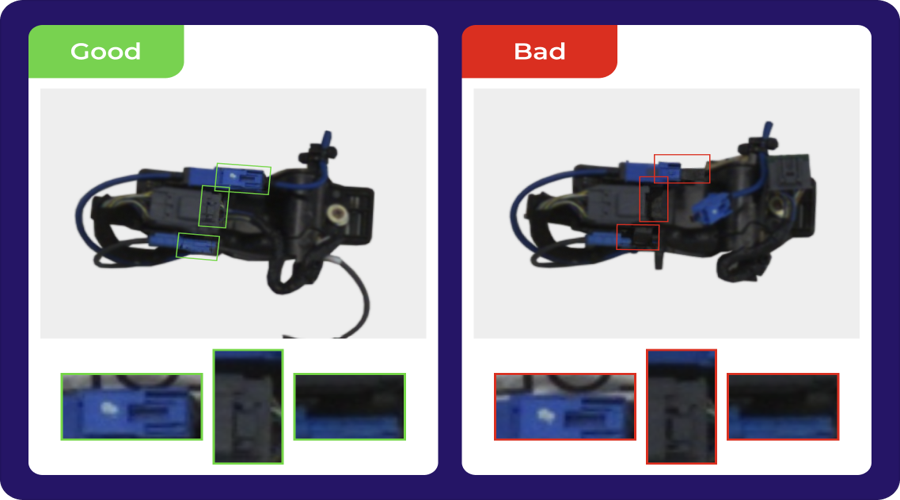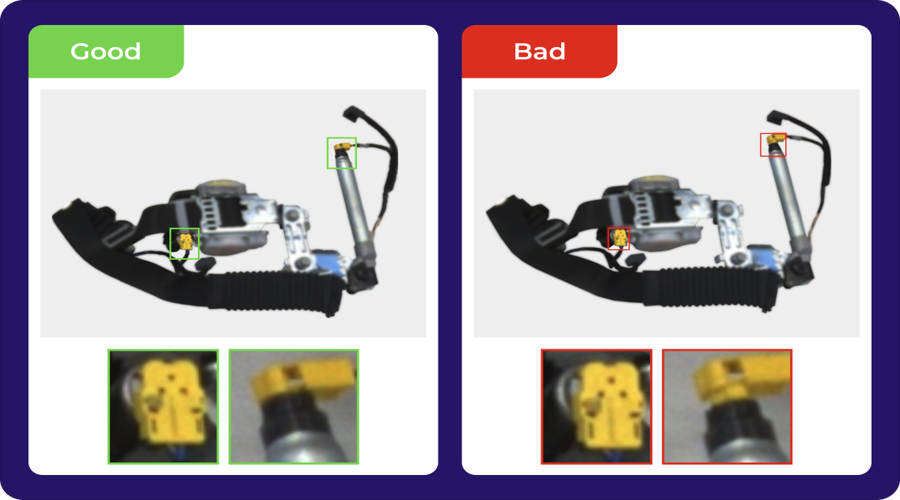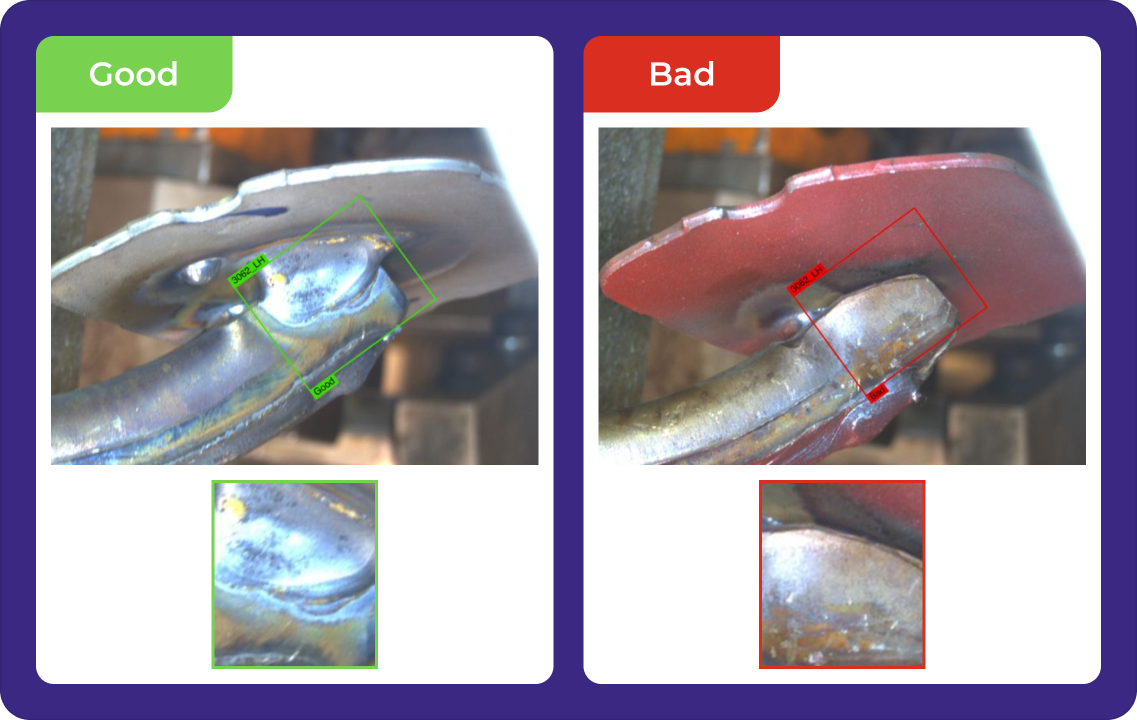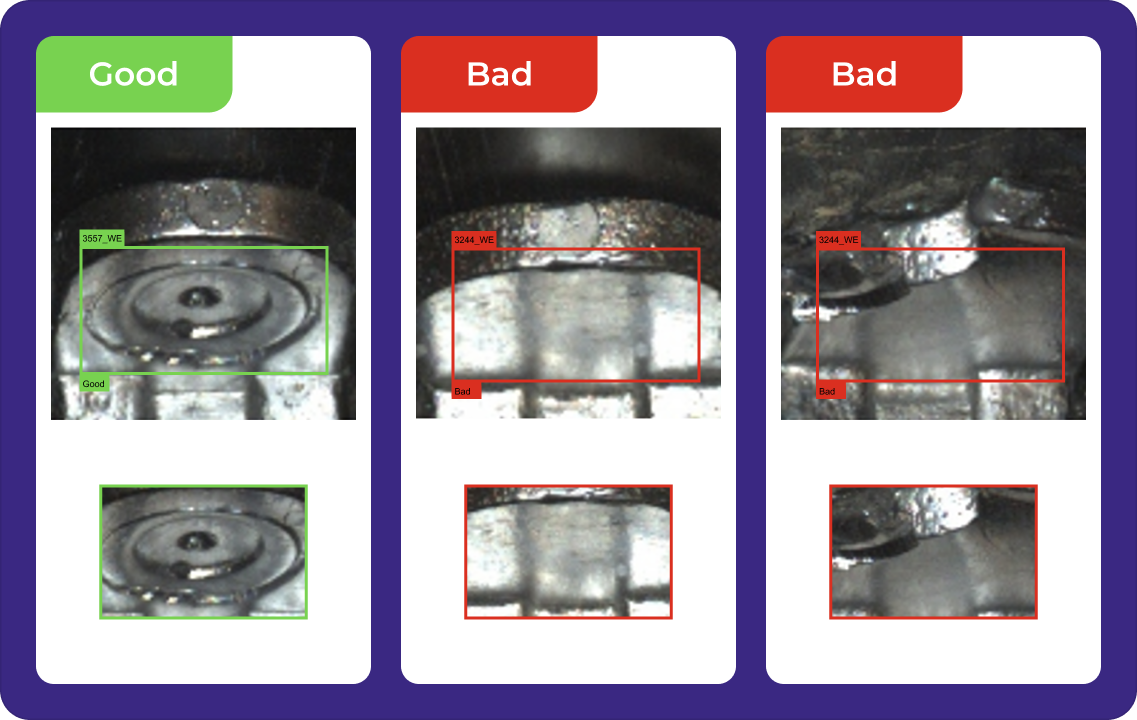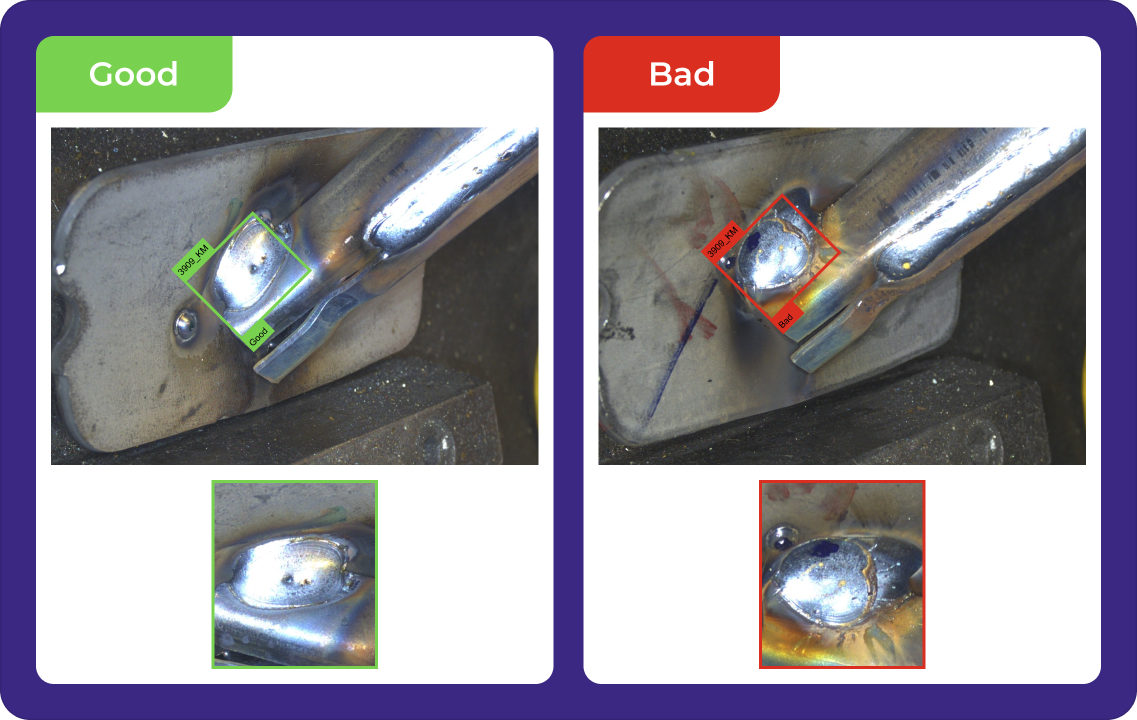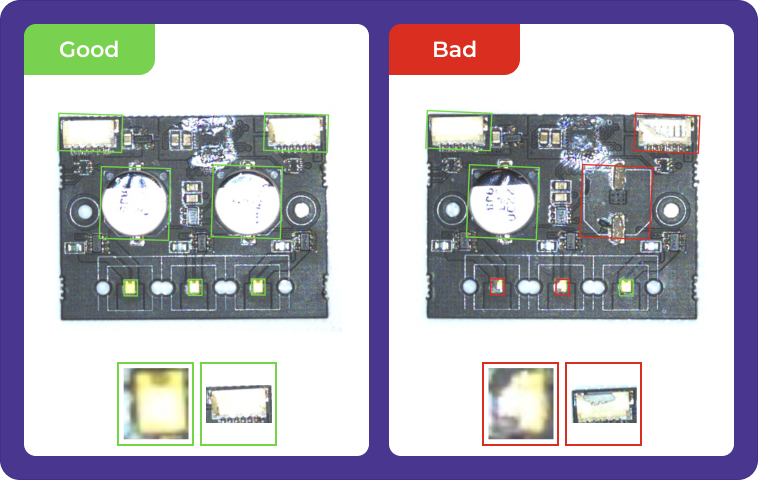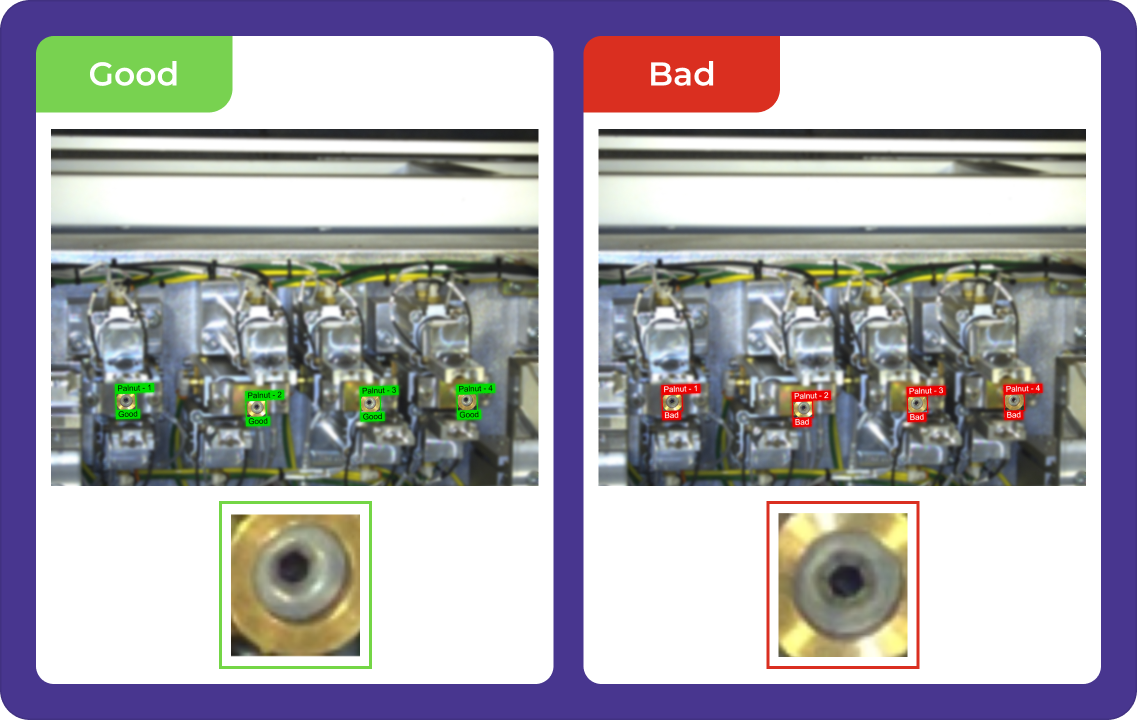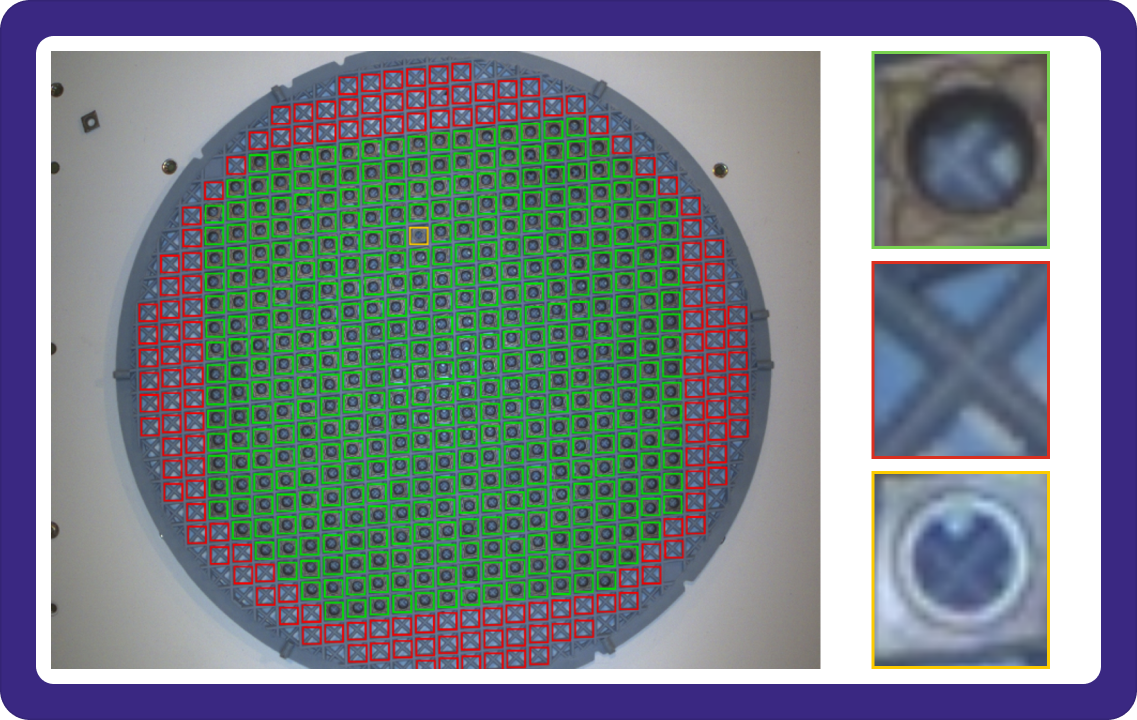
Quality Inspection Systems
This can operate and be governed by strict pre-programmed rules or by machine learning systems that do not require strict programming and learn patterns or defects from available information and data:


- Rule-Based Systems: These systems use predefined rules and algorithms programmed by humans. They work well in controlled environments with predictable defects. However, they require manual updates for any changes and struggle with complex or unexpected variations.
ML-Based Systems: These systems learn from data and can identify patterns and defects without being explicitly programmed. They excel in environments with high variability, adapting to new defect types over time. While they require significant data and computational resources, they are more flexible and capable of handling complex inspections.
Benefits of a Quality Inspection System:
- Accuracy and Consistency: Achieves high accuracy, ensuring uniform inspection without human error.
- High-Speed Inspection: Can inspect thousands of parts per minute, maintaining quality without slowing production.
- 24/7 Operation: Operates continuously with over 99% uptime, boosting productivity.
- Cost Reduction: Lowers labor and recall costs, with ROI typically within 12-18 months.
- Real-Time Data: Provides immediate feedback for proactive quality control and process optimization.
- Scalability: Easily adapts to inspect different products, offering flexibility across production lines.
- Improved Quality: Enhances product quality and customer satisfaction, reducing defects.
- Regulatory Compliance: Ensures products meet industry standards and regulations.
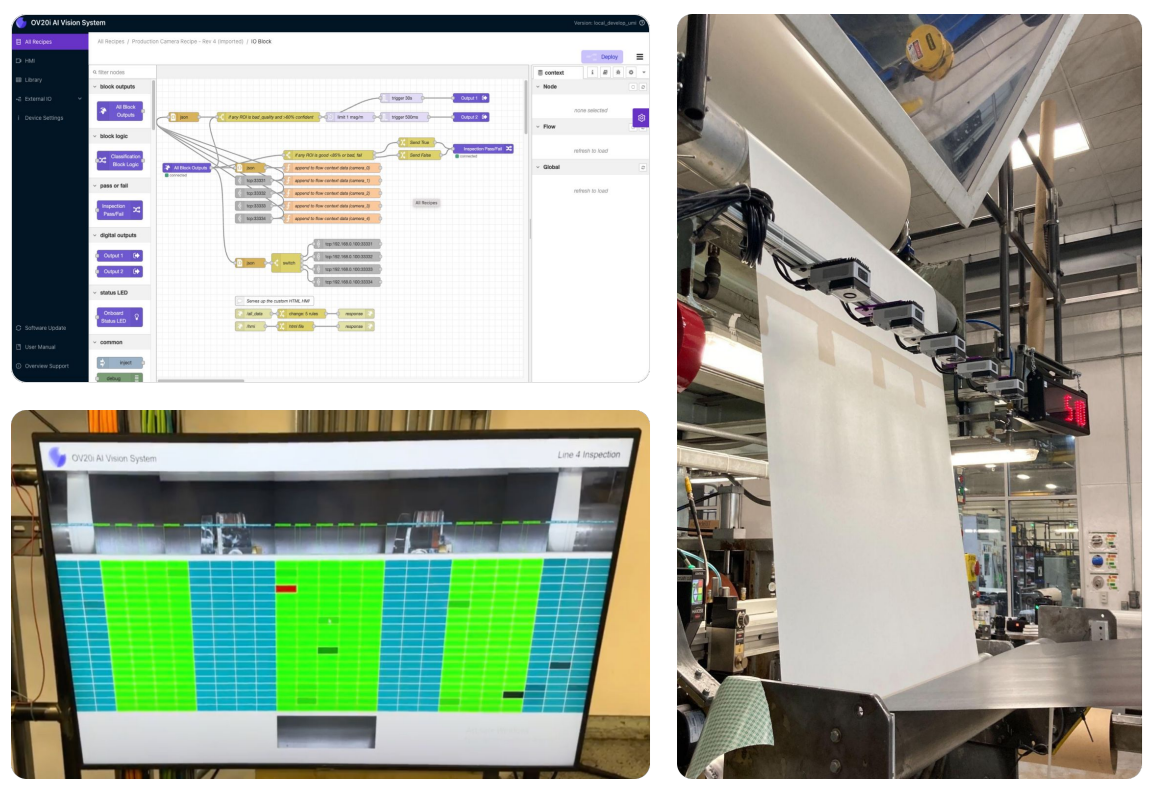
The AI Vision System in the Factory
Compact form factor. Flexible mounting. Multi-camera compatible.

Primary Components of Quality Inspection AI Vision System
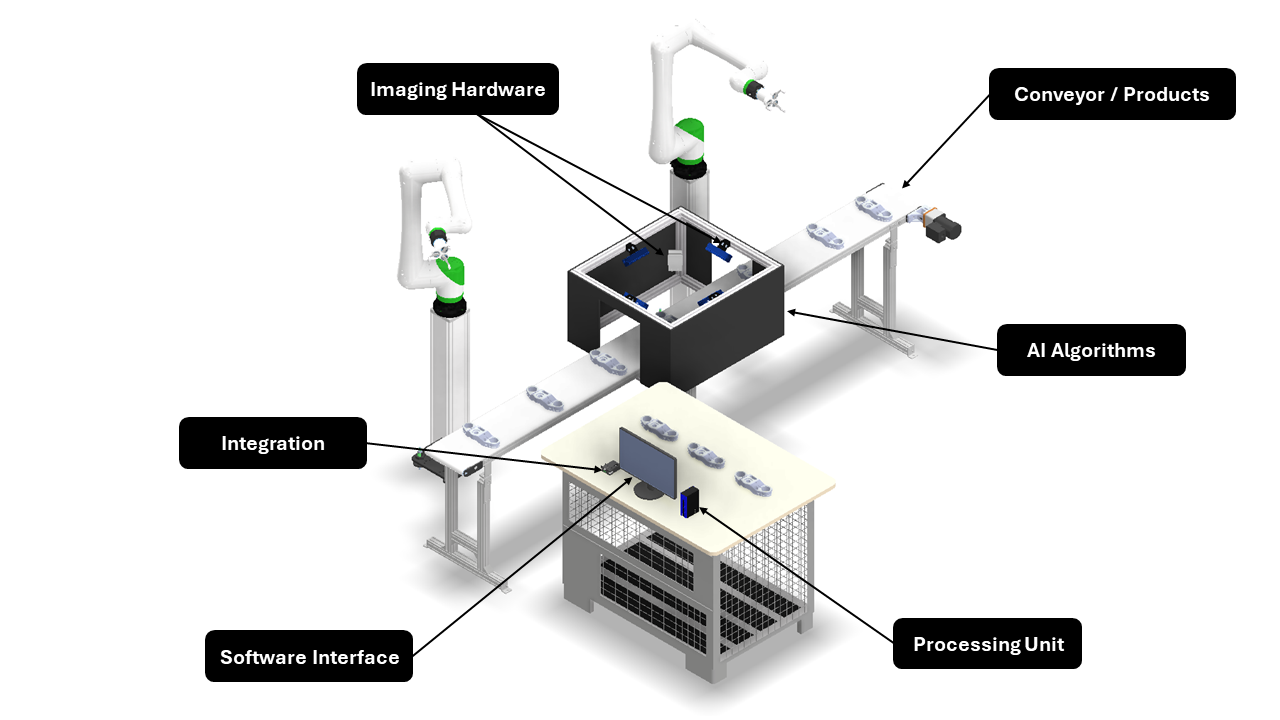


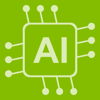
Imaging Hardware:
High-resolution cameras and specialized lighting.
High-resolution cameras and specialized lighting.
Processing Unit:
High-performance GPU/CPU for real-time processing.
High-performance GPU/CPU for real-time processing.
AI Algorithms:
Object detection, classification, and anomaly detection models.



Software Interface:
Real-time monitoring, data management, and user control.
Integration:
PLC/SCADA systems and IoT connectivity for process integration.
Conveyor / Products:
Conveyor belts with the products to be inspected.
Some Samples of Quality Inspection Solutions
Some Samples of Quality Inspection Products
The AI Vision System for non-obvious defects.
What kind of inspections can be performed and what kind of defects can be found?
AI Vision Systems handle the most subtle issues which are often missed by humans and other
vision systems. Performs high-accuracy inspections from challenging angles and
detects small deviations across multiple connectors simultaneously and swiftly.
AI Vision Systems accurately inspect small deviations in good and bad welds. Our vision system generalizes quickly to perform well even on defects that it hasn’t seen before.
